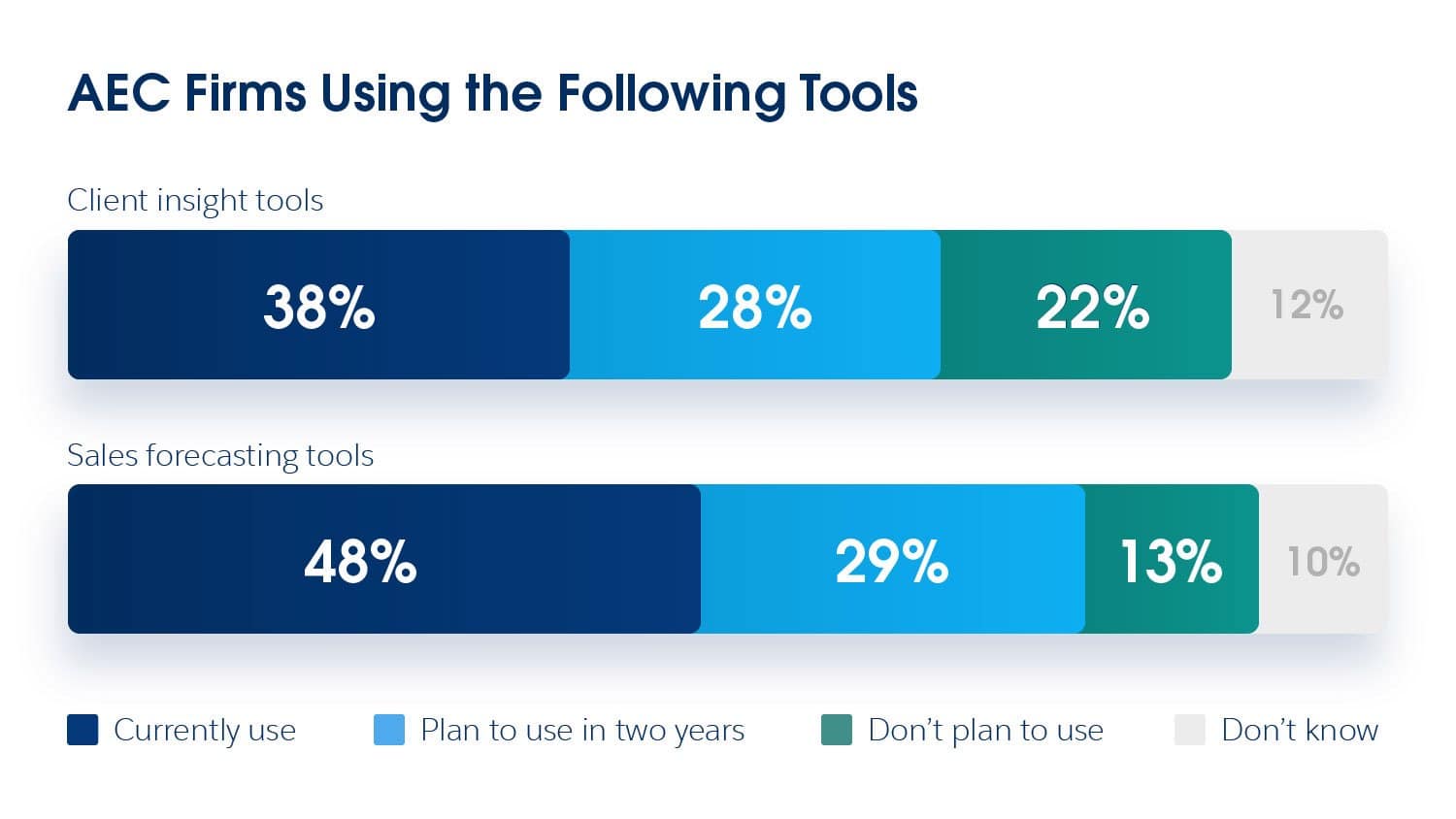Eighty-four percent of sales professionals in architecture, engineering, and construction (AEC) have had to adapt quickly to new ways of selling, according to our Trends in Architecture, Engineering, and Construction Report which shares insights from over 6,000 professionals — including nearly 200 in AEC.
Perhaps in response to this need, the majority (76%) of AEC business development professionals say their digital transformation — meaning the adoption of new technology to improve their business development and other processes — has accelerated since 2019.
Anning-Johnson Company, a commercial specialty construction firm, is betting this strategy will help them prepare and adapt to changes in market demands and customer needs for the years ahead. They weren’t spared by the pandemic or the overall tumult of 2020, but they leaned hard into a digital transformation that they believe will ultimately propel future growth.
Before the pandemic, Anning-Johnson Company had moved bid tracking and employee development to online platforms. The pandemic magnified that need. Employees were able to work more efficiently and have quicker access to the information they needed. “We’ve recognized that we can do just as good, if not better, digitally,” said Michael Ricks, director of corporate initiatives.
While change is never easy, you don’t have to do it alone. We gathered insights from AEC professionals worldwide to help you successfully pivot your business development during this time.
Construction leaders see the need for digital transformation
Construction leaders admit that their back office processes such as operations and business development aren’t exactly cutting-edge, and that they need to do better. “There has been this recognition that not only has our industry been behind, but we might even fall behind our industry and, specifically, our customers,” Ricks said.
His company has already taken steps to remedy this. Over the past 18 months, they have moved their entire digital infrastructure from back office servers to cloud-based platforms. Currently, they’re working to roll out new cloud-based core construction software for day-to-day activities, including accounting and operations, with a target launch date of April 2021.
The changing selling climate and the need to collaborate virtually have made some other tools more important for construction firms since 2019, including video conferencing, sales forecasting tools, and customer relationship management (CRM) systems.
Automation presents a key opportunity to focus on higher-value tasks
Even after identifying the need for technology to help grow their business, many construction firms still lag behind. While more than half of those surveyed in other industries use sales process automation tools, only 38% of construction professionals said the same.
Automation tools, such as those in Sales Cloud, can free up teams to focus on building relationships instead of manually entering client information. It can also help make information more easily accessible across the organization.
When firms rely on manual entry, it can lead to errors and eat into time employees could be spending on higher-value tasks such as customizing bids or building new relationships. If employees can’t find client information, it can mean missed opportunities or miscommunications between departments.
“Digital transformation takes time,” Ricks said. “It is not the accessibility of digital tools, but rather the mindset shifts that need to take place for users to embrace these tools. We are starting to see that change and our teams are asking for easier ways to work through our digital solutions like Salesforce.”
Firms are investing in client insight and sales forecasting tools to stay competitive
Our research shows that business development teams in construction have plans to play catch up so they can maintain their competitive edge. Moving forward, many of them plan to focus on two key technologies: client insight tools to help them understand their clients’ needs and behaviors, and sales forecasting tools to help them estimate future sales.

Just under a third of the 200 AEC companies surveyed said they were planning to adopt client insight tools and/or sales forecasting tools in the next two years. Nearly half are currently using sales forecasting tools, and 38% use client insight tools. Anning-Johnson Company is among the companies already reaping the benefits of client insight and sales forecasting tools.
“After implementing Salesforce, we spent time getting good data like bid records and customers into the platform,” Ricks said. “With good data, we are now able to start evaluating customers and look at trends in our bidding that could help us with forecasting future opportunities. This is the exciting part.”
Ricks added, “We’re staying up to speed with technology so that we can continue to add more value to our customers. It could give us a leg up as we continue to grow and adapt to the environments ahead.”
Discover More Trends in the Architecture, Engineering, and Construction Report
Get the latest research on how construction firms are evolving their businesses development practices to grow revenue.































